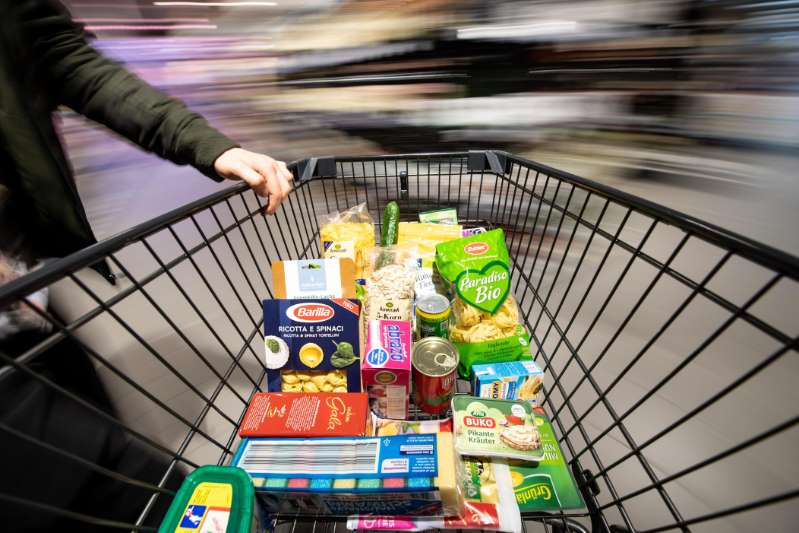Strong plus in food retailing and direct marketing, while wholesaling lost drastically.

Domestic households have significantly increased their food expenditure in the corona crisis. Temporarily closed restaurants and canteens forced consumers to buy more themselves. Household expenditure on fresh food and ready meals (excluding bread / pastries) rose by 14 percent to 7.8 billion euros in 2020 compared to the previous year, according to the current agricultural market analysis by AMA Marketing. Much more frozen products were also bought.
Fresh produce sales in the food retail sector rose by 13 percent to 5 billion euros, with discounters by 14 percent to 2.1 billion euros and with other sales sources (including direct sales, farmers' markets, butchers) by 21 percent to 713 million . Euro. According to the RollAMA survey, the average monthly expenditure for fresh groceries per household in the 2020 corona year was 169 euros; in 2019 it was 150 euros. For the food retail trade there were “fat plus signs”, but for the wholesalers due to the corona-related ban on gastronomy and hotels there was a “fat minus”, said the managing director of AMA Marketing, Michael Blass, at an online press conference on Wednesday. According to the gastropanel of the company Gastrodata, sales in catering wholesaling fell by 28 percent to 1.5 billion euros in 2020.
For the so-called RollAMA, 2,800 Austrian households keep records of their purchases in grocery stores, including the discounters Hofer and Lidl. The study is carried out in cooperation with the market researchers GfK and KeyQU-EST. The basis is the GRP household panel.
Due to the Corona lockdown, the strongest increases in fresh produce sales for retailers were in the second quarter (20 percent), fourth (14 percent) and third quarters (13 percent). From July to September, however, the increase in sales was only 7 percent, mainly due to the open restaurants. The largest increases in volume were in cabbage vegetables (+33 percent), canned vegetables (+28 percent), mushrooms and dry ready meals (+22 percent each) and frozen fruit (+21 percent). Products with a longer shelf life would have “scored particularly well,” said the AMA marketing director.
Due to the corona crisis, the customer frequency in the supermarkets was high, fewer price campaigns were necessary for the retailers to increase the frequency. According to RollAMA, the share of promotions fell slightly in all product groups last year. Most of the price campaigns were for ready meals, meat and sausage. “It wasn't necessary for the grocery retailer to hurl like that,” said Blass. From this, however, “no trend reversal can be derived”. The organic share of the food bought reached a double-digit value for the first time at 10 percent. “We see this as a sign of increased quality awareness among consumers,” said the AMA Marketing Director. The topics of regionality, organic food and quality would remain important for consumers even after the corona pandemic.
Many local farmers have benefited from the increased demand in the corona year. “If we want to take something positive with us from 2020, then it is certainly the conscious consumption of food,” commented Agriculture Minister Elisabeth Köstinger (ÖVP) on the current AMA marketing data. “The quality of the food is particularly important to consumers.”
In 2020, Austrians also bought more frozen products than ever before, said Iglo. According to this, every household bought an average of 25 kilograms of frozen pizza, vegetables, fish and Co. That was 3 kilograms more than in 2019.
According to this, a total of 100,000 tonnes of frozen pizzas and the like were bought by Austrian households last year (all information excluding ice cream and cakes). Thus, a total turnover in food retail of 537 million euros was achieved. Revenues in this food category in food retailing grew by 19 percent last year, or almost a fifth. The fish and seafood segments recorded particularly high growth rates (+24.5 percent to almost 170 million euros), potatoes (+17.9 percent to a good 61 million euros) and vegetables (+ 17 percent to a good 116 million euros) .

